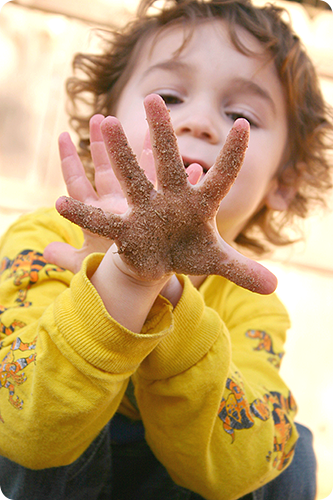Sensory integration refers to how we use the information provided by all of our senses, including the information coming from within our bodies and from the outside environment. All of our senses work together to give us a picture of the world around us – where we are, who we are, and what is happening around us. Our brain takes in the information from our senses, organizes and “filters” the information, and then elicits an appropriate response. We assign meaning to our sensory experiences, and we learn how to respond and behave when presented with different kinds of sensory input.
For most of us, sensory integration occurs without any conscious effort. We are able to navigate our environments, effectively responding to important information and ignoring or “filtering out” what isn’t important – for example, being able to focus on reading a book while there are many background noises present.
For example, a child who has difficulty integrating auditory input may cover their ears in response to certain sounds or environments. Another child may have difficulty integrating tactile input and avoid getting their hands messy with Play-Doh, paint or glue, while another child may actively seek out opportunities to touch and feel.
Some children find it challenging to effectively integrate the information they receive from their senses, making it very difficult for them to respond to certain sensory experiences in an “appropriate” way. A child may avoid confusing or distressing sensations and/or situations or seek out more of a sensation to try and understand it better.
For children with sensory integration difficulties, sensory information can be very confusing and sometimes scary. These children can’t always rely on their senses to give them an accurate picture of what is happening in their world and often don’t know how to behave in response. Too often, these children are given labels like “avoidant,” “disinterested,” or “aggressive,” when really they are responding to sensory input in the only way they know how.
As children learn about and experience new sensations, they gain confidence in their skills and their ability to respond to sensory experiences. As their sensory processing skills develop, pathways in the nervous system are strengthened, and children can improve their ability to manage life’s sensory challenges.
Effective sensory integration is integral for being able to participate in all the experiences life has to offer.
Our Eight Senses
Click through the following to explore our eight senses.
Tactile (touch)
It allows us to interact with our environment by feeling, and providing information about the shape, size, and texture of objects and people. It also gives us information about what is touching our skin, whether it is the feeling of clothing on our body, the feeling of someone brushing or cutting our hair, or the sensation of brushing our teeth.
Visual (sight)
Vision allows us to be aware of and to navigate our surroundings and interpret body language and social cues. The visual and vestibular systems are closely linked in coordination and balance.
Auditory (hearing)
Allows us to distinguish between loud and soft noises and makes it possible for us to attend to important auditory information while “filtering out” unnecessary auditory information. It also allows for the understanding of speech.
Olfactory (smell)
It allows us to distinguish smells as being pleasant, unpleasant or dangerous and is closely linked to our sense of taste.
Gustatory (taste)
It allows us to recognize the flavour of foods (salty, sweet, spicy, bitter) and identify flavours as being safe or harmful.
Vestibular (movement)
This sense provides information about movement, orientation, balance, and our body’s relation to gravity – this is the sense that tells us if we are upside down and in what direction we are moving.
Interoception (awareness of physiological state)
This sense regulates our internal state – for example, it helps us to know when we are hungry or thirsty, when we need to go to the bathroom, when we are sleepy, or when we are too hot or too cold. This sense is also responsible for the regulation of vital bodily functions like respiration, heart rate, and digestion.
Proprioceptive (body awareness)
This sense provides feedback to our muscles, tendons and joints and tells us of our body’s position in space, orientation, and movement. This sense is important for postural stability.


